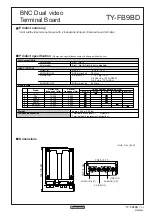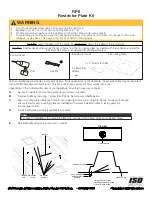
3
XL-AS20015BM-en-US Rev E · 2022-10-05 · Amendments and Errors Reserved · © SAF-HOLLAND, Inc., SAF-HOLLAND, HOLLAND, SAF,
and logos are trademarks of SAF-HOLLAND S.A., SAF-HOLLAND GmbH, and SAF-HOLLAND, Inc.
General Safety Instructions
1. Safety Instructions
General and Servicing Safety Instructions
Read and observe all Warning and Caution hazard alert
messages. The alerts provide information that can help
prevent serious personal injury, damage to components,
or both.
Failure to follow the instructions and
safety precautions in this manual could
result in improper servicing or operation
leading to component failure which, if
not avoided, could result in death or
serious injury.
All maintenance should be performed by a properly
trained technician using proper/special tools, and safe
procedures.
NOTE:
In the United States, workshop safety
requirements are defined by federal and/or state
Occupational Safety and Health Act (OSHA).
Equivalent laws could exist in other countries.
This manual is written based on the assumption
that OSHA or other applicable employee safety
regulations are followed by the location where
work is performed.
Properly support and secure the vehicle from unexpected
movement when servicing the unit.
Failure to properly support and secure
the vehicle and axles prior to
commencing work could create a crush
hazard which, if not avoided, could result
in death or serious injury.
Installation should be performed on an unloaded trailer
if possible.
Operational and Road Safety Instructions
Before operating vehicle, ensure that the maximum
permissible axle load is not exceeded and that the load is
distributed equally and uniformly.
Observe the operating recommendation of the trailer
manufacturer for off-road operation of the installed axles.
IMPORTANT:
The definition of OFF-ROAD means driving
on non-asphalt/non-concrete routes,
e.g. gravel roads, agricultural and
forestry tracks, on construction sites and
in gravel pits.
IMPORTANT:
Off-road operation of axles beyond
the approved application design could
result in damage and impair suspension
system performance.
In the event of suspension component failure, quickly
reduce speed as safely as possible and remove the
vehicle from traffic. If unable to remove vehicle from
traffic, follow DOT safety requirements regarding
emergency situations.
Contact a qualified towing and/or service company to
assist in repairing the vehicle or to move it to a qualified
repair facility.


































